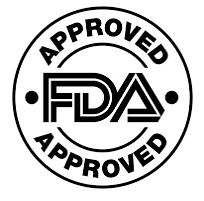Ozone Benefits

Ozone water treatment is raising production levels on the poultry, pig and dairy farms that are using the technology and the financial benefits are reflected in their profits (Engineering News.) If your animals suffer from poor growth, poor reproduction, frequent illnesses and poor milk production, it could be that the water is the determining factor. Sometimes poor water quality can trigger or compound these production-related problems (Bodman.) Lactating cows do not like the taste of the water, they will not drink enough and their milk production will suffer.
Minerals can affect water taste since high levels of one or more minerals can cause an off-taste. Ozone treatment of the drinking water can oxidize the minerals and remove them from the water.

Farm animals are discerning about the water they drink. Removal of unpleasant tastes and smells can result in an increase in water consumption by dairy cattle, for instance, resulting in a measurable rise in milk production (Engineering News.) Well or surface water can also be laden with bacteria. Bacteria in drinking water can lead to illness if the levels are very high. However, even low bacteria levels can stress cows and effect milk production levels. Ozone purification of drinking water has resulted in a meaningful drop in the mortality rates on chicken and pig farmers. It is a logical conclusion that the same will hold true for cows.
Ozone In the Air

Ozone as a Sanitizer
The production of quality milk begins with good hygienic practices. Dirty cows and soiled equipment can lead to elevated bacterial levels in the bulk tank. Alternative sanitizing agents that are safe to the environment are desirable to the food and dairy industries.
Ozone is a potent oxidizing agent that aggressively destroys bacteria, pathogens and viruses. The entire udder and the rear legs should be washed off with ozonated water prior to milking in order to prevent these problems. Ozonated water should be used for rinsing the milking equipment, sanitizing it, thus reducing the chances of milk contamination. All equipment that is used to provide feed for the cows should be washed out with ozonated water on a regular basis to kill mold, mildew and bacteria.
Mastitis in Milk Cows

Reducing stress and controlling infectious diseases can not only reduce the impact of environmental mastitis, but may also lead to higher milk production levels. Milking procedures, particularly udder preparation, can impact the amount of environmental mastitis. No single control measure will have as great an impact in preventing mastitis and conserving quality milk production as minimizing exposure to bacteria. Using ozonated water to wash the udder in the milking parlor and to wash the floors when replacing bedding material will help reduce bacteria. Adding ozone gas to the barn will also provide a continuous assault against bacteria.
Smell Remediation
The federal government has plans to start monitoring and regulating odor at large farms. There is a workable solution that starts with removing the solids from the liquids with a screw press. Ozone can then be used to treat the wastewater to dramatically reduce, or even eliminate, the pathogens and odor in the wastewater lagoons.
Reference:
Gerald Bodman and Shirley Roenfeldt, Troubleshoot Water Intake .Dairy Herd Management.5/7/2003
B. DOSTI 1, A. K. GREENE 1, Z. B. GUZEL-SEYDIM 2, and A. C. SEYDIM 2. (1) Department of Animal and Veterinary Sciences, Clemson University, B-111 Poole Agricultural Center, P.O. Box340361,Clemson,SC29634-0361,(2)Department of Food Science and Human Nutrition, Clemson University, 224 Poole Agricultural Center, P.O. Box 340371, Clemson, SC 29634-0371 http://ift.confex.com/ift/2000/techprogram/paper_4634.htm
Wallace, Richard L. Production of Quality Milk Through Environmental Mastitis Control .IlliniDairyNet.http://traill.outreach.uiuc.edu/dairynet/paperDisplay.cfm?ContentID=198
Engineering News, Ozone Water Treatment Coming for Agriculture .Mining Weekly and Polity.Published:07/27/2001

